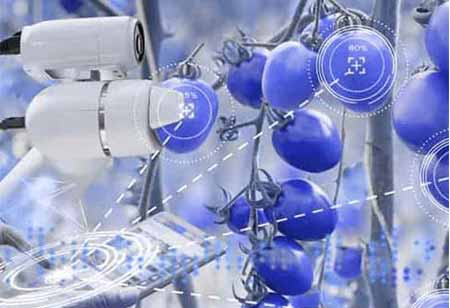Thank you for Subscribing to Agri Business Review Weekly Brief
Future of Farming Sustainability and Agricultural Nanotechnology
The poor knowledge of the farmers in general and the excessive use of chemicals has severely affected

By
Agri Business Review | Monday, August 22, 2022
Stay ahead of the industry with exclusive feature stories on the top companies, expert insights and the latest news delivered straight to your inbox. Subscribe today.
Nanotechnology has contributed to sustainable agriculture by enhancing crop production and restoring better soil quality.
FREMONT, CA: Nanotechnology is used in various aspects of agriculture, such as:
- Nano-pesticide delivery
- Slow and controlled release of nanoparticles comprising biofertilizers
- Transport of genetic materials for crop development
- Application of nano biosensors for quick detection of phytopathogen and other biotic and abiotic stresses.
The poor knowledge of the farmers in general and the excessive use of chemicals has severely affected the agricultural land as the toxic agrochemicals pollute the surface and groundwater. In addition, the greater use of chemical pesticides also eliminates beneficial microbes, insects, and other wildlife from the soil. The cumulative impact of all of the above results in major ecosystem degradation.
Nanoparticles Commonly Used in the Agricultural Sector
Several nanoparticles are commercially employed in agriculture. Some of the generally used nanoparticles are referred to below:
Polymeric nanoparticles
In the agricultural region, polymeric nanoparticles are used to deliver agrochemicals in a slow and controlled manner. Polymeric nanoparticles' advantages are their superior biocompatibility and minimal impact on non-targeted organisms.
Some of the polymeric nanomaterials utilized in agriculture are polyethylene glycol, poly(epsilon-caprolactone), poly(lactide-co-glycolides), and poly (γ-glutamic acid).
Silver nanoparticles
Silver nanoparticles are widely used for their antimicrobial property against a wide range of phytopathogens. In addition, scientists have also reported that silver nanoparticles improve plant growth.
Nano alumino-silicates
Many chemical companies employ nano alumino-silicate formulations as an efficient pesticide.
Titanium dioxide nanoparticles
These nanoparticles are biocompatible and are utilized as a disinfecting agent for water.
Carbon nanomaterials
Carbon nanoparticles like graphene, graphene oxide, carbon dots, and fullerenes are employed for improved seed germination.
Some other nanoparticles used in agriculture are zinc oxide, copper oxide nanoparticles, and magnetic nanoparticles.
Nanotechnology in Sustainable Agriculture
Agricultural Nanotechnology for the Improvement of Crop Productivity
Nanopesticides and nanoherbicides
Applying nanoherbicides and nano pesticides to manage weeds and pests has significantly increased crop productivity. Different nanoparticles, such as polymeric and inorganic, are utilized for nanoherbicide formulations.
Scientists have developed different routes for the efficient delivery of herbicides. For example, poly (epsilon-caprolactone) nanoparticles encapsulate atrazine, a herbicide. This nanocapsule revealed strong control of the targeted species, lowered genotoxicity level, and could also significantly decrease the atrazine mobility in the soil.
Nanomaterials for disease management
Microbial (virus, fungus, and bacteria) infections incur huge agricultural losses annually.
Nanomaterials with specific antimicrobial properties aid prevent microbial infestations. Common pathogenic fungi that induce diseases are Colletotrichum gloeosporioides, Fusarium solani, Fusarium oxysporum, and Dematophora necatrix.
Several nanoparticles, such as nickel ferrite and copper nanoparticles, have a strong antifungal property and are effectively used in disease management. For example, in the case of viral infection treatment, chitosan nanoparticles, zinc oxide nanoparticles, and silica nanoparticles are effective against viral diseases such as mosaic virus for tobacco, potato, and alfalfa.
Nanofertilizers
Scientists have employed nanotechnology to design a smart delivery system that would release nutrients in a slow and controlled manner to the targeted site to tackle nutrient deficiency in plants.
Nanofertilizers enhance crop productivity by improving the availability of essential nutrients to the plant.
A significant increase in millet and cluster beans yields was found after applying nanophosphorus fertilizers in arid conditions. In addition, Chitosan nanoparticle suspensions containing nitrogen, phosphorus, and sodium have also increased crop production.
Nanotechnology in seed development
Seed quality is an important factor on which crop productivity depends.
It has been noted that carbon nanotubes can enter the hard seed coat of tomatoes and considerably improve the germination index and plant growth.
Likewise, the germination percentage increased when soybean and corn seeds were sprayed with a multiwall carbon nanotube. Different nano treatments are available to increase the germination index of plants.
Nanobiosensors
Nanobiosensors are extremely sensitive and specific when compared to conventional biosensors. These devices transform biological responses into electrical responses via a microprocessor.
Nanobiosensors offer real-time signal monitoring and are involved in directly or indirectly detecting pathogenic microorganisms, antibiotic resistance, pesticides, toxins, and heavy metal contaminants. In addition, this technology monitors crop stress, soil health, nutrient content, plant growth, and food quality.
Futuristic Strategies and Policy Choices for Sustainable Farming Through Agricultural Nanotechnology
The following are some of the tactics devised for sustainable farming using agricultural nanotechnology:
- Controlled green synthesis of nanoparticles
- Knowledge of nanoparticles generated by root endophytes and mycorrhizal fungi, which play a major role in plant productivity and disease management
- Interaction of nanoparticles with plant system like transport mechanism of nanoparticles inside the plant body
- Critical evaluation of the adverse effects of nanoparticles on different environmental conditions
- Development of portable and user-friendly nanobiosensors for quick analysis of soil, plants, water, and pesticides
Some of the policy options for the employment of nanotechnology for the sustainable development of agriculture are listed below:
- Development of special institutions with proficiency for the proper evaluation of biosafety of nanoparticles
- Formation of clear guidelines after Food Safety and Standards Authority (WHO standards) for monitoring and evaluation of nanoparticle-based systems
- Proper documentation of nanomaterials-founded toxicity to the aquatic organisms
- More cooperative research and sharing of resources for the development of a better research system
To effectively use nano-based products, farmers should be educated by skilled professionals to minimize field problems.





